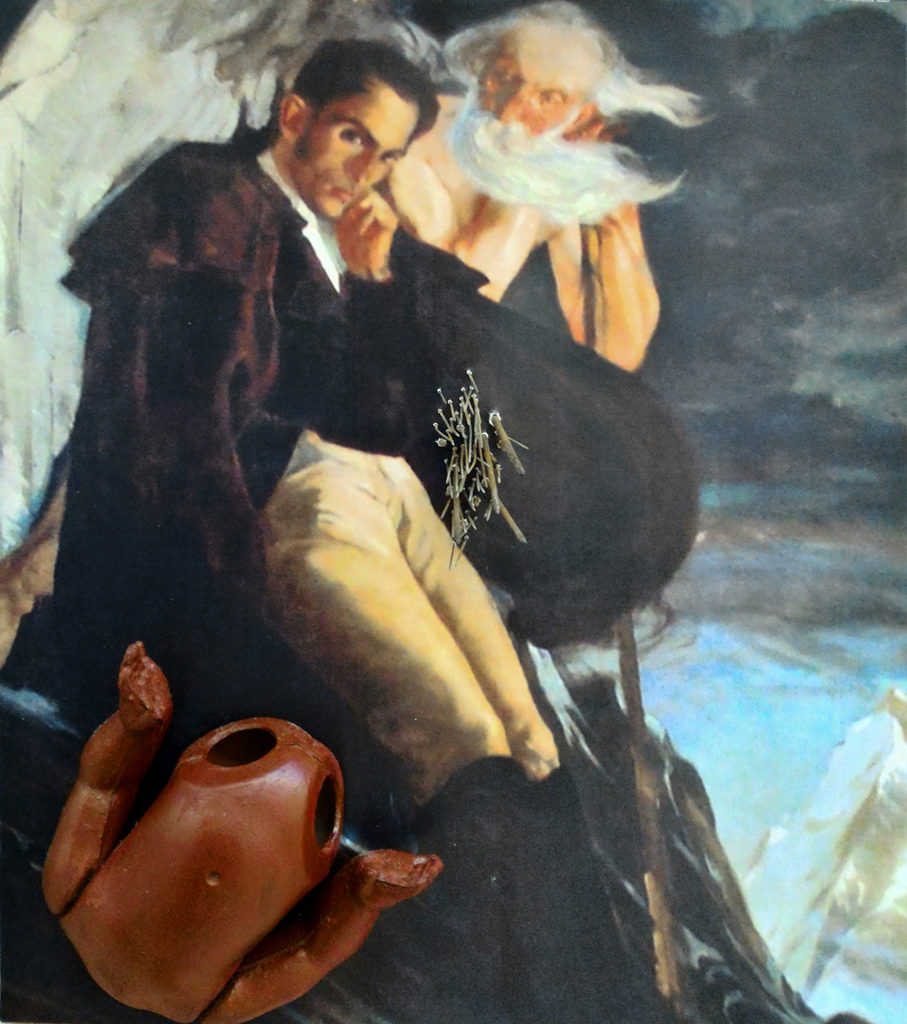Bolívar, 1986-2016
Empecé a trabajar con la figura de Bolívar desde los inicios de mi carrera artística. Me interesa las construcciones míticas que hay detrás del personaje. Para mi es una forma de problematizar esa «revolución» burguesa e inconclusa que están detrás de nuestros proyectos independentistas y de los intentos actuales de «reformar» o sanear ese orden.
///
I have been working with the figure of Bolívar since the beginning of my artistic career. I’m interested in the mythical constructions behind the person. For me, it is a way of problematizing this bourgeois and unfinished «revolution» that lies behind our new independence projects and current attempts to «reform» the sanitation of this order.
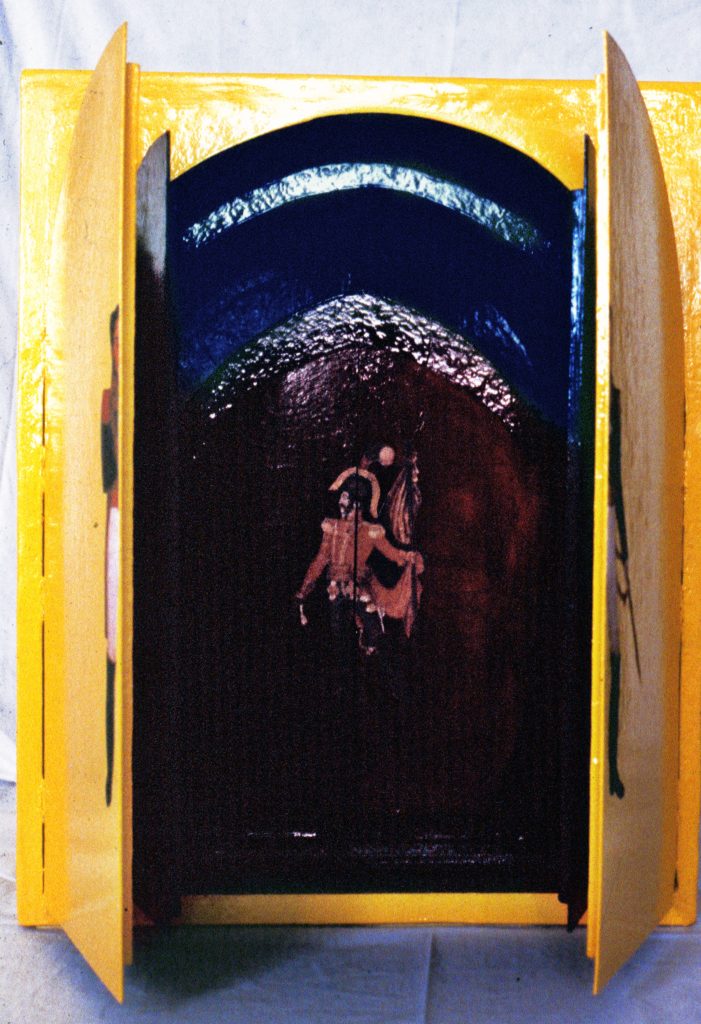
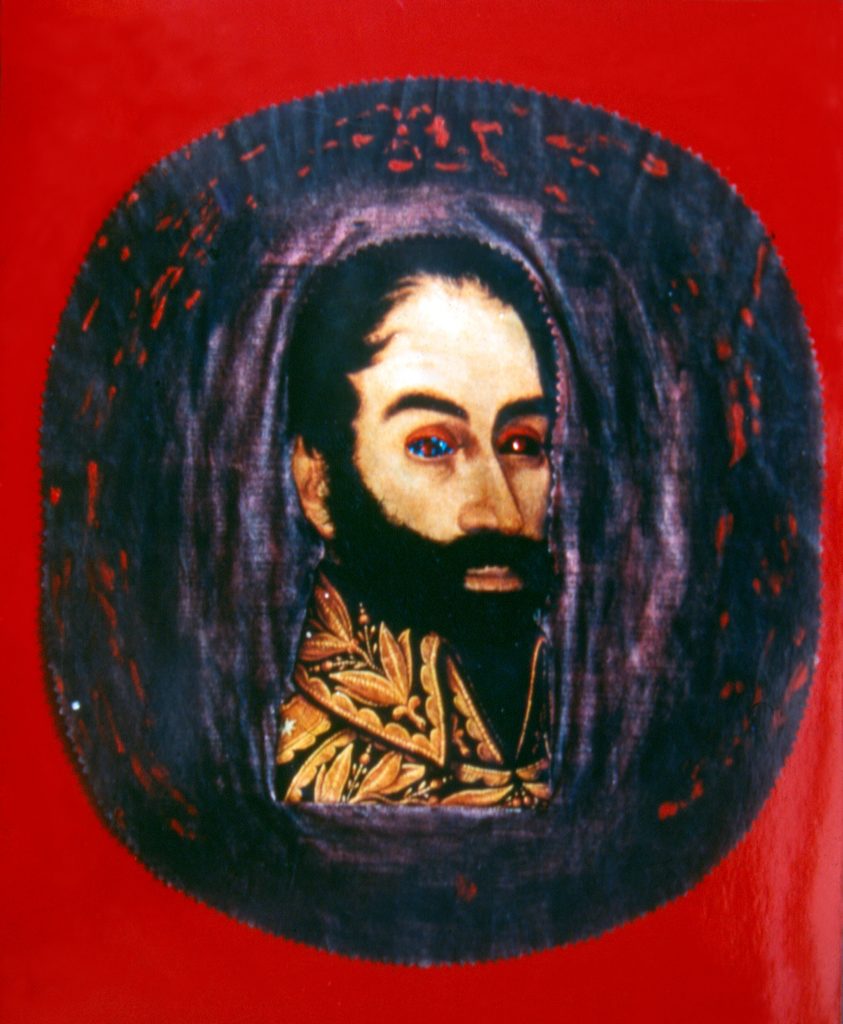

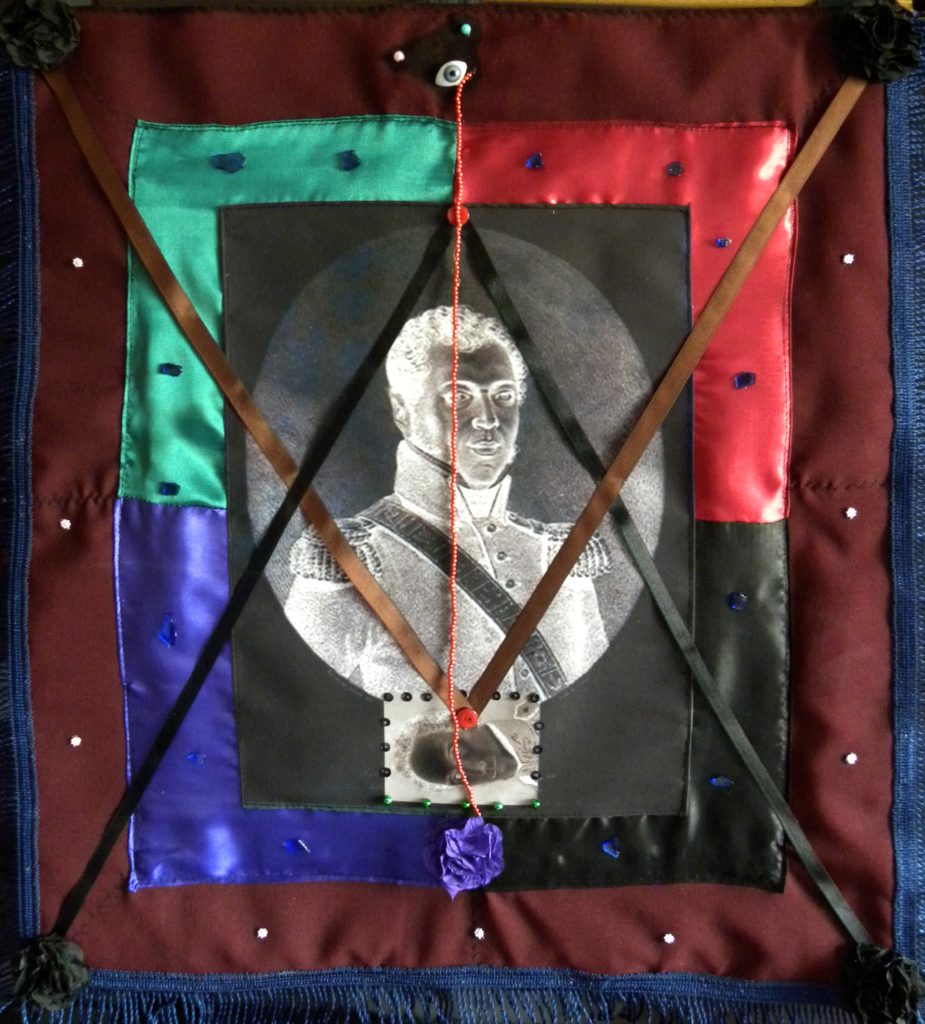
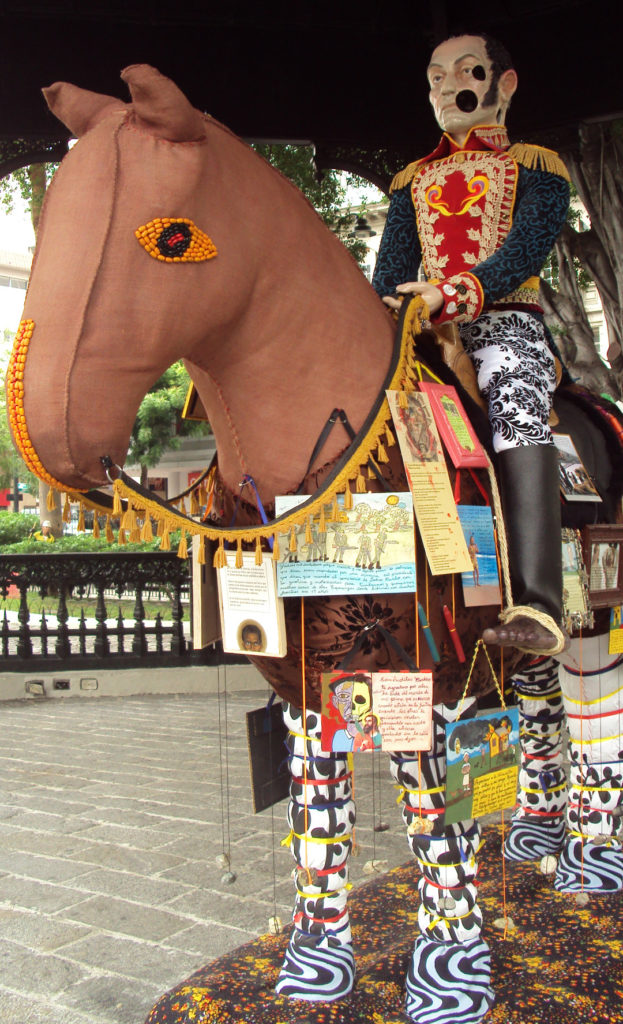
Exvotos and corridos for Crónica de Negras by an unknown liberator in a very distant country that is not called Ecuador, 2011. This work was located in the roundabout of Parque Seminario as part of Los Caballos de Colores, an initiative promoted by the municipality of Guayaquil and in which a prefabricated fiberglass sculpture was given to each artist to decorate the city.
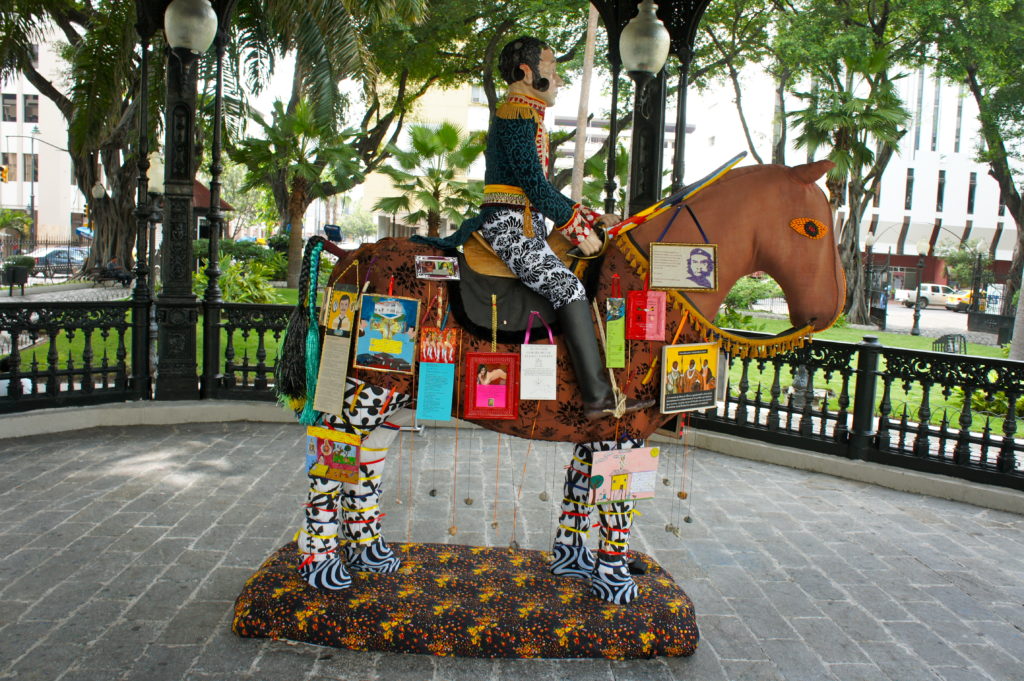
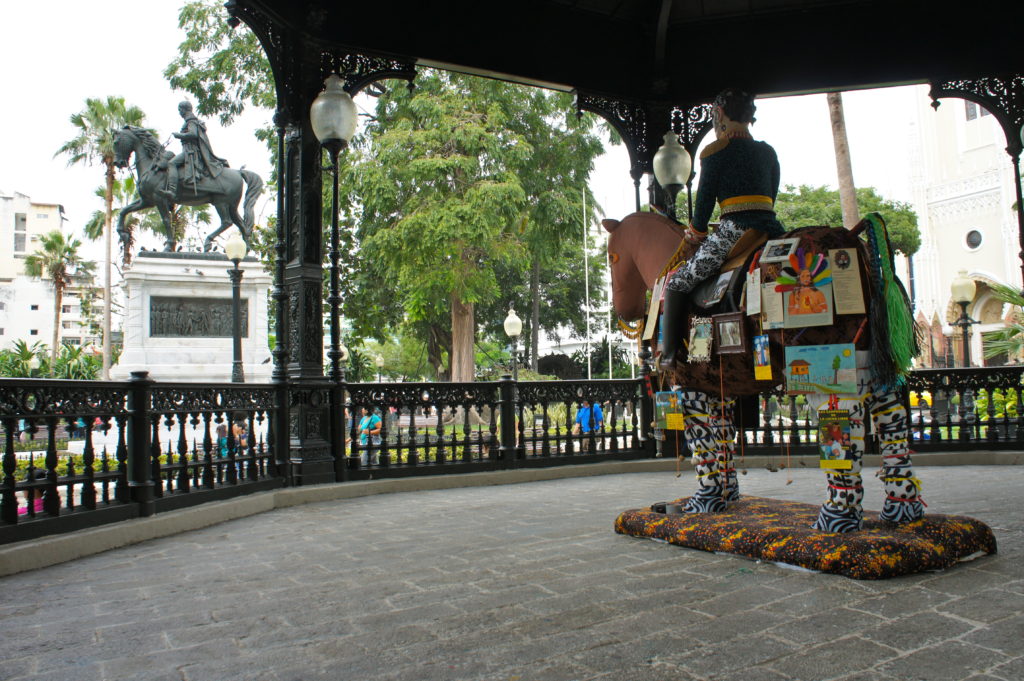
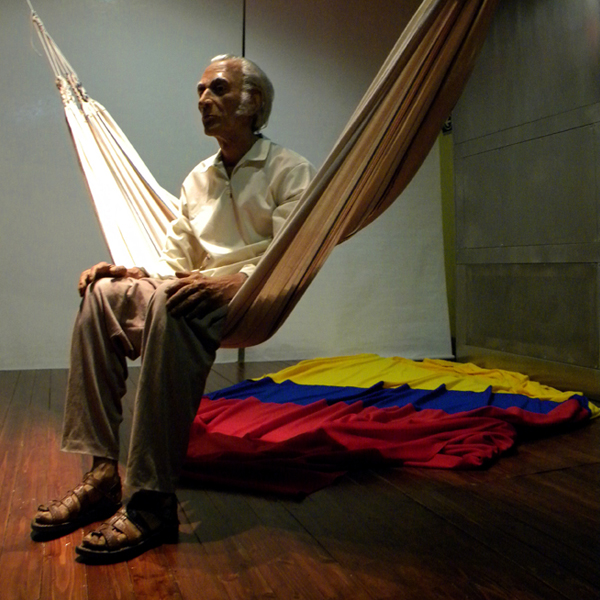
Imaginé a un Simón Bolívar viejo y exhausto, y lo representé en su hamaca pensando como sería si no hubiera muerto joven.
Bolívar Project, 2010. It was an installation in the Centro Cultural Libertador Simón Bolívar, a ex- Anthropological and Contemporary Art Museum (MAAC), an institution that months before had adopted that name by decision of the President. The installation included a series of videos where historians, writers, academics, peasant leaders, and Afro-descendants spoke about Bolívar. The proposal not only questioned, ironically, the decision to change the museum’s name, but also warned of the desire for transformation proposed by the Citizen Revolution project under the idea of a Bolivarian brotherhood.
I have image a Simón Bolívar old and exhausted, and I represent him in his hammock thinking how he would be if he had not died young.
